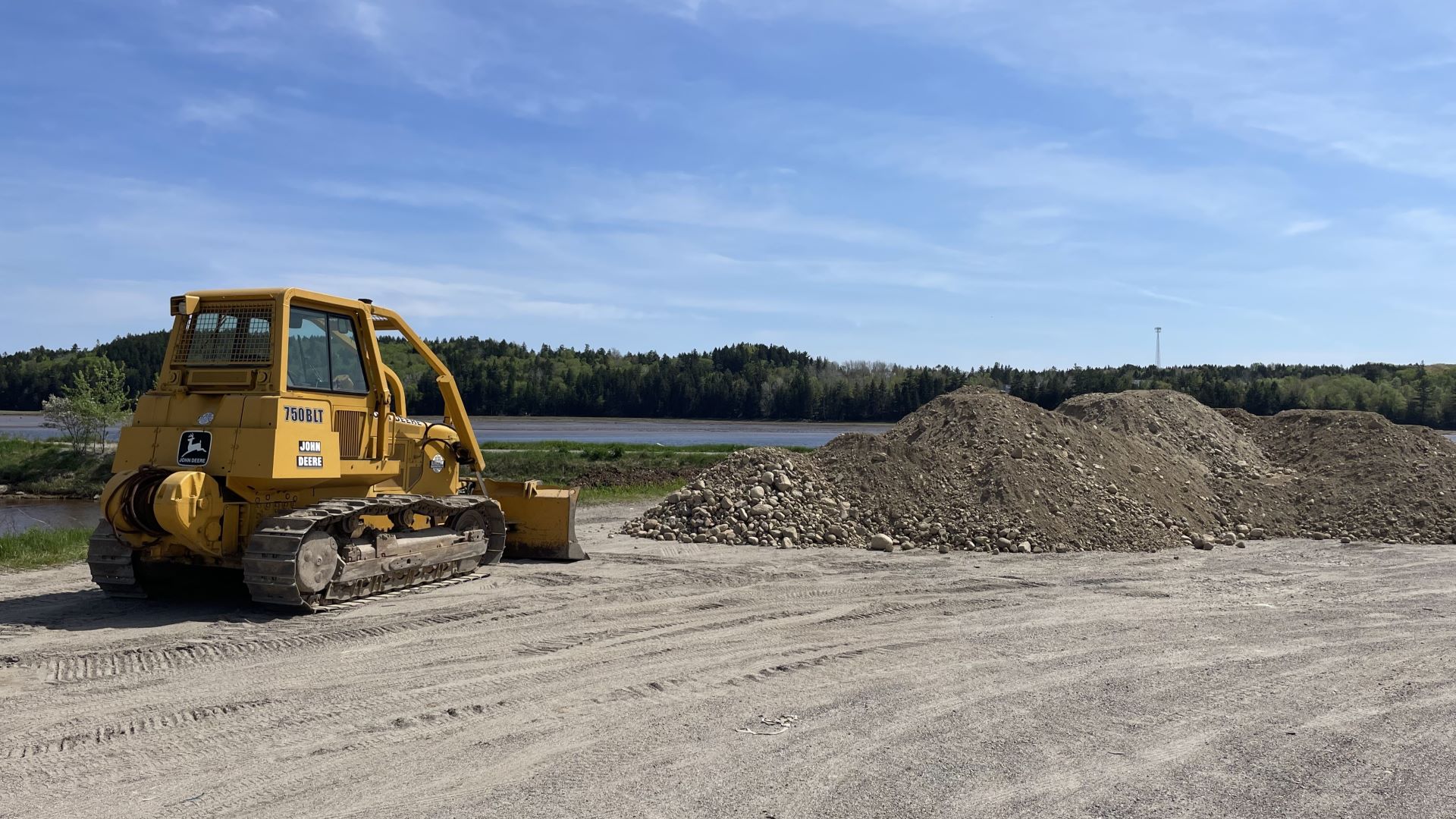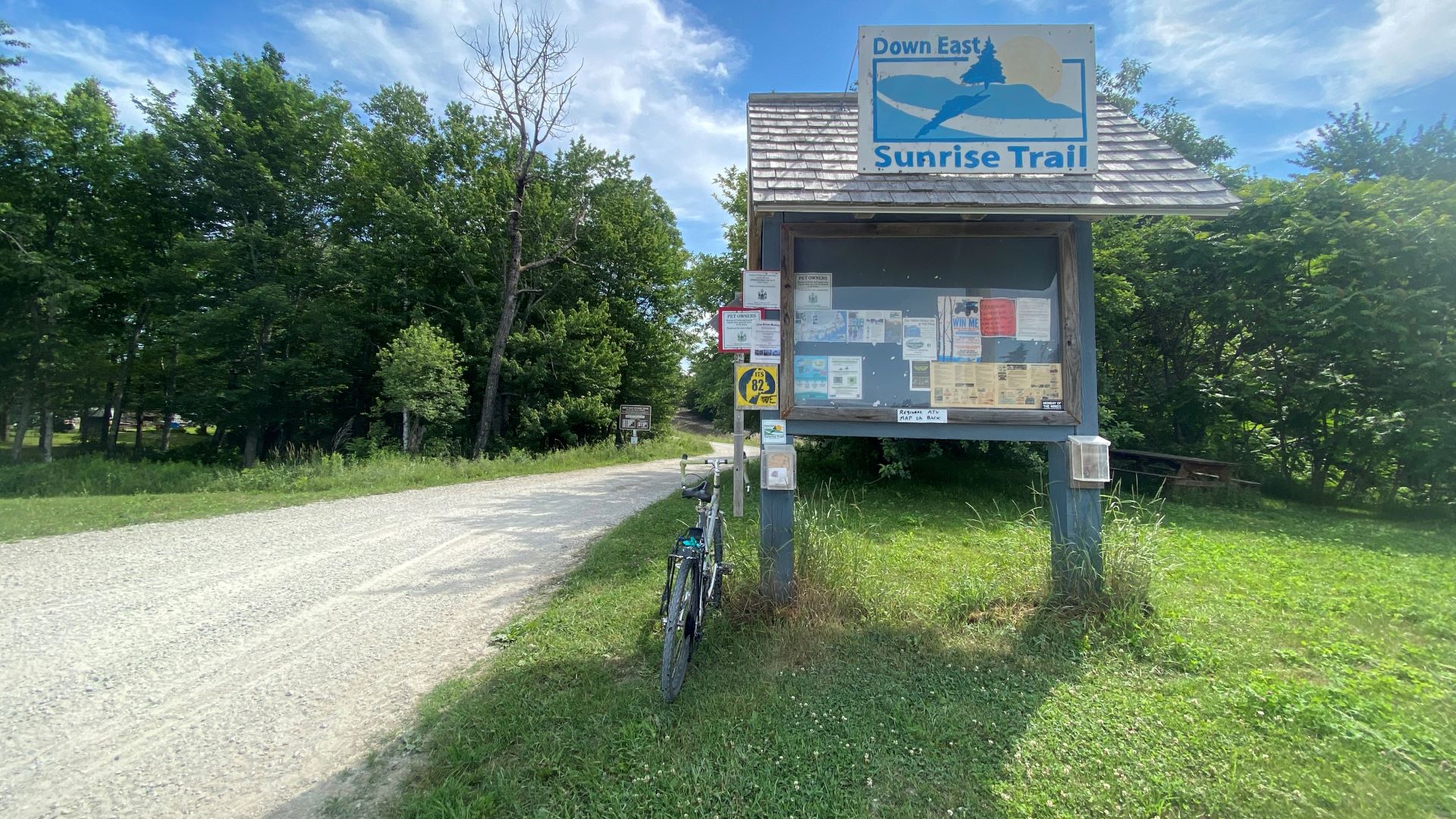The dike portion of the storm-damaged Down East Sunrise Trail in Machias was repaired this week, again allowing ATV riders and recreational users to connect with the undamaged, farthest east parts of the trail.
The news was confirmed Thursday by Brian Bronson, the state’s ATV program supervisor, who spoke to The Monitor hands-free from his vehicle even as another severe rainstorm pelted his windshield.
“These are exactly the kinds of storms that scare us, said Bronson, who is with the Maine Department of Agriculture, Conservation and Forestry. “We get just stupid amounts of rain.”
Catastrophic back-to-back storm surges in January flooded Machias and besieged the dike, ripping out portions of the foundation and the adjacent trail, rending the popular recreational path impassable.
The storms wreaked havoc across the coast, causing an estimated $70 million in damage to public infrastructure alone.
Repairs are ongoing to washed-out culverts along Machias Bay, so recreational users will need to detour on Route 1 through East Machias to access eastern inland ATV trails. Meanwhile a temporary span was constructed over the failing dike, with plans uncertain for a permanent replacement.
Although many of the state’s ATV trails remain closed due to storm damage, the Sunrise Trail officially opened earlier this month, but dike erosion and six culvert washouts created a roughly two-mile gap, cutting off what some say is the most scenic part of the trail along Machias Bay and the Schoppee tidal marsh.
All repairs, allowing full access, will be complete by late June in time for Machias’ much-anticipated ATV Jamboree, according to Bronson.
Heavier riprap, new culverts and more than 3,000 yards of gravel were trucked in to shore up both sides of the compromised trail. Excavators, front-end loaders and dump trucks must make their way slowly along the less than 20-foot-wide trail, rebuilding it as they go.
Matthew Connor, with the Maine Department of Transportation, is the crew leader at the site. He said they have to work slowly, for safety reasons and to accommodate rising tidal waters two times each day — as well as any new violent storms, such as the one this week.
“It’s not every day you’re out here fixing what Mother Nature has been dishing us as of lately, Connor said.

Hanscom Construction, based just outside Machias in Marshfield, was awarded the contract to complete repairs that are expected to cost roughly a half-million dollars. Funding to help defray the cost comes from the Federal Emergency Management Agency (FEMA), which, along with the U.S. Army Corps of Engineers, had to approve the scope of the work. FEMA rules say the trail can be repaired but not substantially improved, according to Machias Town Manager Bill Kitchen.
The approved repairs, currently underway, call for reinforcing the trail with larger stone riprap on both sides of the washouts, replacing culvert pipes and rebuilding the surface, with hopes that the repairs will stand up to future storm surges, said Bronson.
Many sea rise experts and several area conservation groups would like to see the trail structure improved, with larger culverts and additional bridges to allow a more natural flow of bay waters into the marsh, helping to mitigate future storm surge damage. According to the latest estimates, the upgrades would cost around $1.5 million.
A new collaboration between the conservation groups — Cobscook Shores, Maine Coast Heritage Trust, Down East Coastal Conservancy, Down East Salmon Federation, and Maine Inland Fisheries and Wildlife — is working to find a more sustainable, permanent solution for the entire upper Machias Bay.
Experts say coming together to make that plan a reality is more urgent than ever.
A new report released earlier this month by the Maine Natural Areas Program division of the Department of Agriculture, Conservation and Forestry updated the department’s marsh mitigation plan, based on startling predictions about the impact of sea level rise.
The analysis indicates Maine is likely to experience a net loss of tidal marsh habitat over time. Some current marshes may become inundated and available migration space is limited, according to the MNAP report.
Only about 31% of potential marsh migration space across all sea level rise scenarios is conserved statewide, underscoring the need for additional conservation efforts for current and future marsh areas, the report said.
Geographer Tora Johnson is co-director of the Sustainable Prosperity Initiative at the Sunrise County Economic Council. Johnson, who is working with the groups, has studied sea rise in Down East Maine for many years.
“Sea levels in the Gulf of Maine are rising more quickly than other parts of the planet, so the reality is that any coastal marsh restoration is a moving target,” said Johnson.







